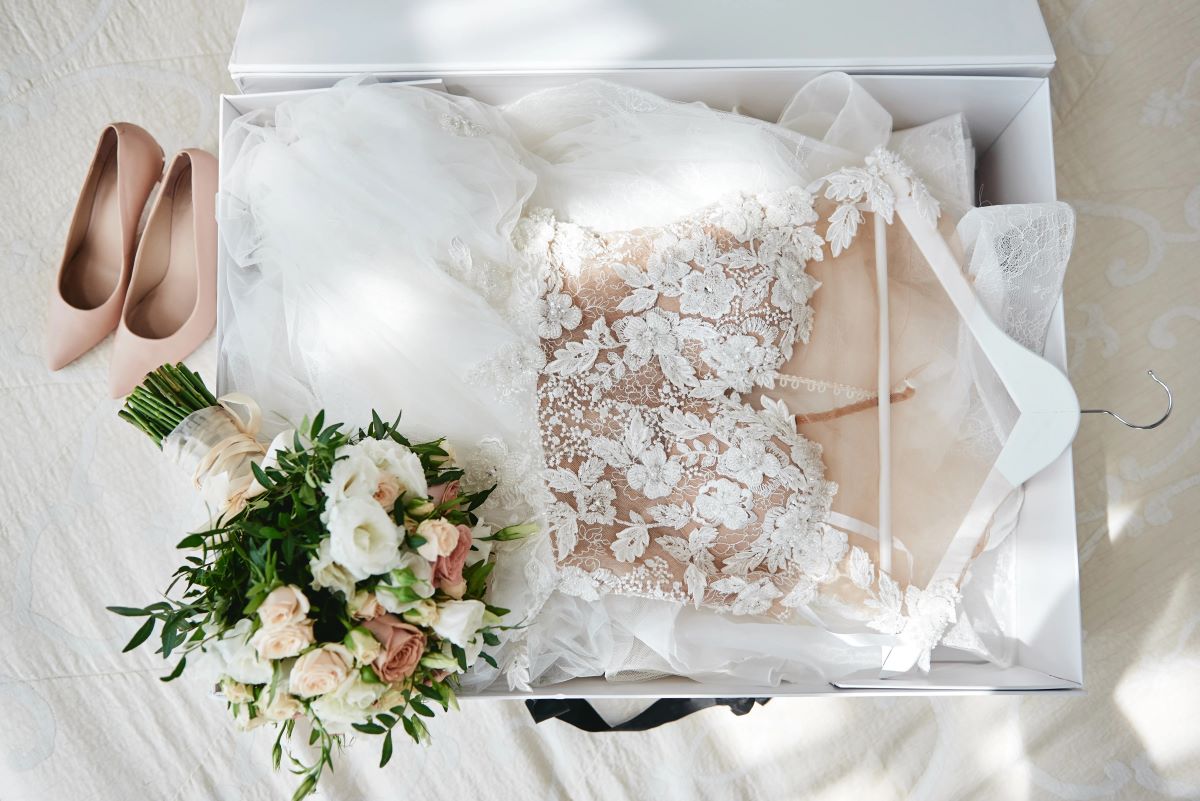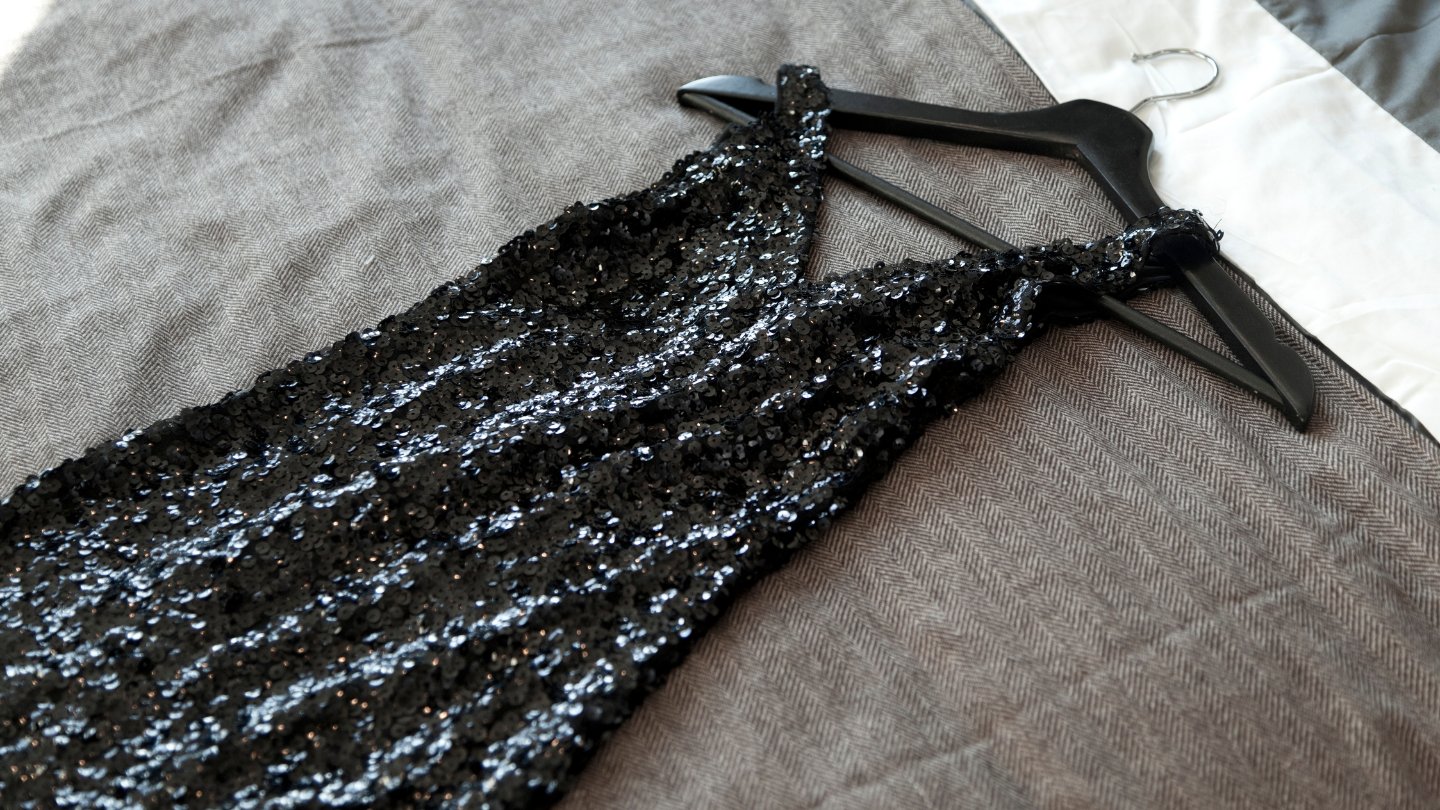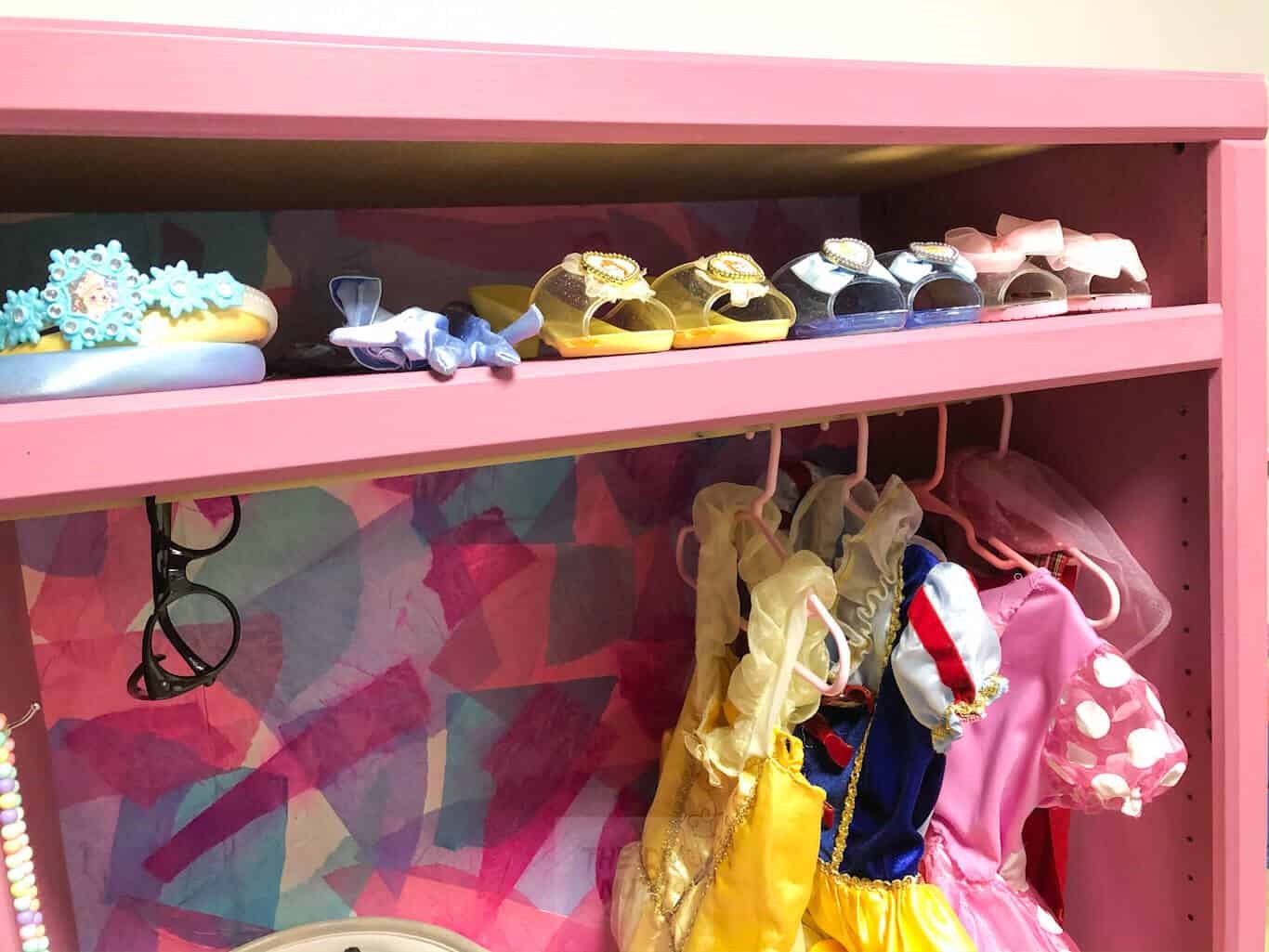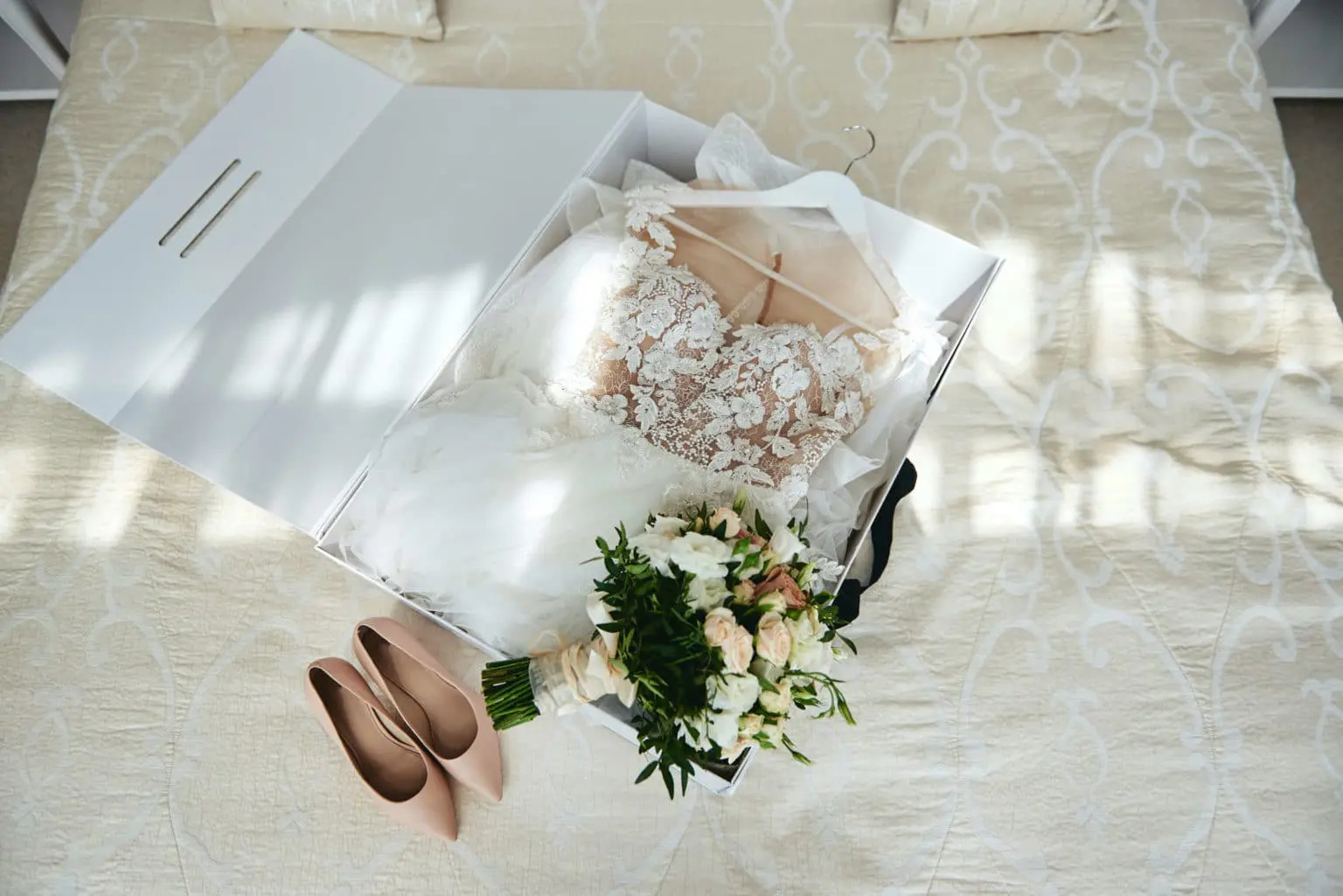

Articles
How To Store Formal Dresses
Modified: January 8, 2024
Learn how to properly store formal dresses and articles in order to keep them in pristine condition. Follow these tips to ensure your garments are protected and maintain their quality.
(Many of the links in this article redirect to a specific reviewed product. Your purchase of these products through affiliate links helps to generate commission for Storables.com, at no extra cost. Learn more)
Introduction
Formal dresses are typically reserved for special occasions and events, and it’s important to store them properly to maintain their quality and longevity. Whether you have a collection of elegant evening gowns or a few classy cocktail dresses, the right storage techniques can make a significant difference in preserving their beauty and functionality.
Proper storage involves choosing the right storage space, preparing the dresses for storage, deciding between folding and hanging, using protective covers, storing accessories separately, avoiding moisture and humidity, and regularly checking and maintaining the dresses. Additionally, if you have vintage or delicate formal dresses, there are specific tips to follow to ensure their safety.
In this article, we will explore in detail the various steps and considerations involved in storing formal dresses. By following these tips, you can keep your dresses in optimal condition, ready to be worn with elegance and grace for future occasions.
Key Takeaways:
- Proper storage of formal dresses involves choosing the right space, preparing the dresses, deciding between folding and hanging, using protective covers, storing accessories separately, avoiding moisture, and regularly checking and maintaining the dresses. Each dress is unique, so tailor your storage methods accordingly.
- For vintage or delicate formal dresses, extra care is needed. Clean before storage, use acid-free tissue paper, avoid wire hangers and plastic containers, opt for climate-controlled storage, handle with gloves, limit handling, inspect regularly, and consider professional preservation. These steps will help safeguard the beauty and integrity of these special garments.
Read more: How To Store Dresses
Choosing the Right Storage Space
When it comes to storing formal dresses, selecting the appropriate storage space is crucial. The ideal location should be dry, clean, and free from direct sunlight. Let’s explore some essential factors to consider when choosing the right storage space for your formal dresses.
1. Climate Control: It’s important to choose a storage area with climate control. Extreme fluctuations in temperature and humidity can damage the fabric of your dresses. Avoid storing them in spaces like attics or basements that are prone to temperature changes and excessive moisture.
2. Dark and Cool Environment: Exposure to sunlight can lead to fading and discoloration of your dresses. Therefore, opt for a storage space away from natural light. Additionally, choose a cool area to prevent any heat-related damage to the fabrics.
3. Clean and Dust-Free: Make sure the storage space is clean and free from dust and debris. Dust particles can settle on the dresses, causing staining and damage over time. Regular cleaning of the storage space will help maintain a pristine environment for your garments.
4. Adequate Space: Ensure that the storage area has enough space to accommodate your dresses without excessive crowding. Avoid storing them in a tightly packed wardrobe or closet, as this can lead to wrinkling and creasing of the fabric.
5. Pest Prevention: Take measures to protect your dresses from pests such as moths and insects. Consider using natural pest repellents like lavender sachets or cedar blocks to deter these unwanted visitors.
By considering these factors, you can choose a suitable storage space that will ensure the longevity and well-being of your formal dresses. Taking the time to find the right storage area will pay off in the long run, as your dresses will be preserved in excellent condition, ready to be worn whenever the occasion arises.
Preparing the Dresses for Storage
Before storing your formal dresses, it’s important to take some preparatory steps to ensure they remain in pristine condition. Here are some key tips for preparing your dresses for storage:
1. Clean the Dresses: Start by thoroughly cleaning your formal dresses before storing them. Follow the care instructions provided by the manufacturer or consult a professional cleaner if needed. Removing any stains or dirt will prevent them from setting in and potentially causing damage during storage.
2. Inspect for Damage: Take the time to carefully inspect your dresses for any signs of damage or loose threads. Repair any loose seams or missing buttons before storing the dresses to prevent further deterioration.
3. Remove Accessories: Remove any detachable accessories such as belts, brooches, or embellishments from the dresses. These accessories can snag or damage the fabric if left attached during storage.
4. Consider Fabric Protection: For delicate fabrics or dresses with intricate detailing, you may want to consider applying a fabric protector spray. This can help repel stains and provide an extra layer of protection during storage.
5. Use Acid-Free Tissue Paper: Place acid-free tissue paper between the layers of the dress to prevent any color transfer or creasing. This will also help maintain the shape of the dress while in storage.
6. Avoid Plastic Bags: It’s important to avoid storing formal dresses in plastic bags or wrappings, as these can trap moisture and promote the growth of mold or mildew. Opt for breathable fabric garment bags instead.
7. Label and Organize: To make it easier to locate specific dresses in the future, consider labeling the garment bags or storage boxes with the dress name or occasion. Organize the dresses by style, color, or frequency of use to streamline the retrieval process.
By taking these preparatory steps, you can ensure that your formal dresses are clean, protected, and ready for storage. Properly preparing the dresses will help maintain their quality and minimize the risk of damage or deterioration during storage.
Folding vs. Hanging
When it comes to storing formal dresses, one common dilemma is whether to fold or hang them. The decision between folding and hanging depends on various factors, including the type of fabric, the length of the dress, and the available storage space. Let’s explore the benefits and considerations of each approach:
Folding: Folding can be a suitable option for dresses made of sturdy fabrics, such as satin or taffeta, as well as shorter dresses. Here are some key points to keep in mind when folding your dresses:
- Use acid-free tissue paper to gently wrap the dress before folding it. This will help prevent creases, wrinkles, and color transfer.
- Fold the dress along the natural seams to maintain its shape and minimize the risk of creasing.
- Store folded dresses in breathable fabric storage boxes or containers to protect them from dust and maintain their condition.
Hanging: Hanging is generally recommended for dresses made of delicate fabrics, such as silk or chiffon, as well as longer dresses. Consider the following points when hanging your formal dresses:
- Choose padded hangers to provide proper support and prevent the dress from stretching or losing shape.
- Avoid using metal or wire hangers that can leave crease marks or indentations on the dress.
- Make sure the dress is hanging freely and not crowded against other garments, as this can lead to wrinkling or distortion of the fabric.
- Use a breathable garment bag to protect the dress from dust, light exposure, and potential damage from handling.
Ultimately, the decision between folding and hanging depends on the specific dress and your storage space. It’s important to assess the needs of each dress individually and select the appropriate storage method to ensure its longevity and quality.
If you have limited storage space, you may need to make a compromise and fold some dresses while hanging others. Just make sure to follow the proper folding and hanging techniques to minimize any potential damage during storage. Regularly check the condition of the stored dresses to ensure they remain in optimal condition and adjust the storage methods as needed.
Using Protective Covers
Protective covers are essential for preserving the quality and integrity of your formal dresses during storage. These covers provide an additional layer of protection against dust, light exposure, and potential damage. Here are some key tips for using protective covers effectively:
1. Choose the Right Cover: Opt for garment bags or covers made of breathable fabric such as cotton or muslin. Avoid plastic covers as they can trap moisture and promote the growth of mold or mildew.
2. Size Matters: Ensure that the protective cover you choose is spacious enough to accommodate the dress without compressing or wrinkling it. A tight fit can cause creases and potentially damage the fabric.
3. Padding is Important: Look for covers with padded shoulders or insert padded shoulder forms to help maintain the shape of the dress. Padding protects delicate fabrics, such as lace or embroidery, from stretching or losing their intricate details.
4. Proper Closure: Make sure the protective cover has a secure and reliable closure, such as a zipper or snaps. This will ensure that the dress is fully enclosed and protected from any dust or light exposure.
5. Labeling: Consider labeling the protective covers, especially if you have multiple dresses. Clear labels will help you quickly identify the dress you’re looking for, minimizing the need to handle and potentially damage other dresses during retrieval.
6. Avoid Using Plastic for Delicate Fabrics: For particularly delicate or heirloom dresses, it’s best to avoid direct contact with any plastic material. Instead, wrap the dress in acid-free tissue paper before placing it in the protective cover to provide an extra layer of protection.
7. Regular Inspection: Periodically inspect your dresses while in storage to ensure that the protective covers are in good condition and there are no signs of mold, moisture, or pests. Any faults or damages in the cover should be promptly addressed to prevent potential harm to the dress.
Using proper protective covers will shield your formal dresses from environmental elements and keep them in excellent condition. By following these guidelines, your dresses will stay clean, dust-free, and ready to be worn without any need for extensive cleaning or repairs.
Store formal dresses in a breathable garment bag to protect them from dust and light. Hang them on padded hangers to maintain their shape and avoid stretching. Avoid plastic bags, as they can trap moisture and cause damage.
Read more: How To Store Prom Dresses
Storing Accessories Separately
When organizing and storing formal dresses, it’s essential not to overlook the accessories that accompany them. Accessories such as belts, jewelry, gloves, and wraps are often integral parts of an outfit and require proper storage to maintain their condition. Here are some key tips for storing accessories separately:
1. Categorize and Sort: Begin by categorizing your accessories based on their type and material. Separate jewelry from belts, gloves from wraps, and so on. This will make it easier to store and retrieve them when needed.
2. Jewelry Storage: Invest in a jewelry box or organizer with compartments to keep your jewelry neatly separated and tangle-free. You can also use small pouches or zip-top bags for individual pieces and then store them together in a larger container.
3. Belt Hooks or Hangers: To prevent belts from getting tangled or creased, consider using belt hooks or hangers. Hang belts individually to maintain their shape and make them easily accessible when it’s time to accessorize your dress.
4. Wrap and Shawl Containers: For wraps and shawls, choose breathable fabric bags or containers. Folding them gently and placing them inside will help prevent wrinkles and ensure they stay clean and protected.
5. Glove Protection: Store gloves in individual compartments or small bags to protect them from dust, moisture, and damage. Avoid crushing or folding them to maintain their shape.
6. Labeling and Organizing: Labeling the containers or pouches for each accessory will make it easier to find and retrieve them as needed. Use clear labels or color-coded tags to identify the contents quickly.
7. Store Separately from Dresses: Keep the accessories separate from the formal dresses to prevent any damage or staining. Storing them together can lead to snagging, color transfer, or other forms of damage that may be irreversible.
By storing accessories separately from the formal dresses, you can ensure they remain in good condition, ready to enhance and complete your outfit for future events. Taking the time to organize and protect your accessories will save you from the stress of searching for misplaced items and potentially prolong their lifespan.
Avoiding Moisture and Humidity
Moisture and humidity can be detrimental to the quality and longevity of formal dresses. Excessive moisture can cause mold, mildew, or musty odors, while high humidity levels can lead to fabric damage, color fading, and even structural issues. To protect your dresses from these potential hazards, consider the following tips:
1. Choose a Dry Storage Area: Select a storage space that is dry and well-ventilated. Avoid basements, attics, or other areas prone to dampness, as these environments can increase the risk of moisture-related problems.
2. Use Silica Gel Packs: Place silica gel packs inside the storage containers or garment bags to help absorb any excess moisture and maintain a dry environment. Replace the silica gel packs periodically according to the manufacturer’s instructions.
3. Dehumidify if Necessary: In areas with high humidity, consider using a dehumidifier to control the moisture levels. This can be particularly helpful in regions with humid climates or during the summer months.
4. Protect Against Water Damage: Ensure that the storage area is not susceptible to leaks or water damage. Fix any plumbing issues or roof leaks promptly to prevent water from reaching your dresses.
5. Avoid Storage Near Moisture Sources: Keep formal dresses away from areas with water sources, such as washing machines, sinks, or pipes. The proximity to these sources increases the risk of moisture exposure.
6. Don’t Store Wet Dresses: It’s crucial to ensure that your formal dresses are completely dry before storing them. Storing damp or wet dresses can lead to mold or mildew growth and create an unpleasant smell.
7. Monitor Temperature and Humidity Levels: Regularly check the temperature and humidity levels in the storage area. Use a hygrometer to monitor the humidity and adjust the storage conditions if necessary.
By implementing these measures, you can minimize the risk of moisture and humidity-related issues and protect your formal dresses from potential damage. Creating a dry and controlled storage environment will help ensure that your dresses remain in excellent condition, ready to be worn for future special occasions.
Checking and Maintaining the Dresses Regularly
Regularly checking and maintaining your formal dresses is essential for preserving their quality and longevity. By giving your dresses the attention they deserve, you can catch any potential issues early on and take necessary steps to prevent further damage. Here are some important tips for checking and maintaining your dresses regularly:
1. Schedule Routine Inspections: Make it a habit to inspect your stored dresses at least once every few months. This will allow you to identify any signs of damage, pests, or discoloration early on.
2. Check for Stains or Spots: Take a close look at the dresses to identify any new stains or spots that may have occurred during storage. Address these stains promptly using the appropriate stain removal techniques or seek professional cleaning if necessary.
3. Look for Insect Infestations: Inspect your dresses for any signs of pest activity, such as moth holes or insect eggs. If you notice any insects or evidence of infestation, take immediate action to prevent further damage by using natural pest repellents or contacting a professional for assistance.
4. Assess the Fabric and Embellishments: Examine the fabric of your dresses for any signs of wear, tears, or loose threads. Check the condition of embellishments, such as sequins, beads, or crystals, ensuring they are securely attached and not at risk of falling off.
5. Handle with Clean Hands: Prior to inspecting or handling your dresses, make sure your hands are clean and free from oils or lotions that can transfer onto the fabric. Clean hands help prevent staining or damage to delicate materials.
6. Check the Storage Containers: While inspecting your dresses, also check the condition of the storage containers or garment bags. Ensure that they are clean, free from insects, and in good working order. Replace any damaged or worn-out containers.
7. Rotate the Dresses: Consider rotating the dresses in storage periodically. This allows equal exposure to light and air circulation, minimizing the risk of fabric discoloration and maintaining their overall condition.
8. Make Necessary Repairs: If you notice any damages or issues during the inspection, address them promptly. Repair loose seams, replace missing buttons, or seek professional assistance for complex repairs to prevent further deterioration.
Regularly checking and maintaining your formal dresses will help extend their lifespan and ensure that they are always in pristine condition. By practicing these maintenance habits, you can enjoy your dresses for years to come, knowing that they are well-cared for and ready to be worn for any special occasion.
Tips for Storing Vintage or Delicate Formal Dresses
Vintage and delicate formal dresses require extra care and attention when it comes to storage. These dresses often feature intricate details, fragile fabrics, or historical value that need to be preserved. Here are some important tips to keep in mind when storing vintage or delicate formal dresses:
1. Clean Before Storage: Ensure that vintage dresses are professionally cleaned by a specialist who understands the intricacies of delicate fabrics and embellishments. This will help remove any dirt, stains, or oils that can cause damage over time.
2. Acid-Free Tissue Paper: Layer the dress with acid-free tissue paper to protect the delicate fabric and prevent any color transfer. This will also help preserve the shape and structure of the dress during storage.
3. Avoid Wire Hangers: Never use wire hangers to hang vintage or delicate dresses, as they can leave marks, cause stretching, or distort the fabric. Opt for padded hangers or hang the dresses using archival-quality, fabric-covered hangers.
4. Avoid Plastic Containers: Plastic containers can trap moisture and heat, leading to potential damage to vintage or delicate dresses. Instead, choose acid-free, archival-quality storage boxes made of acid-free cardboard or fabric-covered boxes.
5. Climate-Controlled Storage: It’s crucial to store vintage and delicate dresses in a cool, dry, and climate-controlled environment. Avoid areas with extreme temperature fluctuations, high humidity, or exposure to direct sunlight, as these can accelerate fabric deterioration.
6. Handle with Gloves: When handling vintage dresses, consider wearing clean, cotton gloves to prevent any oils or dirt from transferring onto the delicate fabric. This will minimize the risk of staining or damage.
7. Limit Handling: Minimize handling or excessive movement of vintage dresses to prevent stress on delicate fabrics and seams. When necessary, ensure your hands are clean, dry, and free from any jewelry or accessories that can snag the delicate fabric.
8. Regular Inspection: Check on your stored vintage dresses periodically to ensure they remain in good condition. Look for signs of insect infestations, mold, or any damage that may require immediate attention.
9. Professional Preservation: For high-value or extremely delicate vintage dresses, consider consulting a professional preservationist who specializes in preserving and storing delicate textiles. They can provide specific guidance and employ techniques to ensure the longevity of these special garments.
By following these tips, you can help safeguard the beauty and integrity of your vintage or delicate formal dresses. Proper storage will preserve their historical significance, aesthetic appeal, and sentimental value, enabling future generations to appreciate and enjoy these timeless pieces.
Read more: How To Store Dress Pants
Conclusion
Storing formal dresses properly is crucial for maintaining their quality, preserving their beauty, and ensuring they are ready to be worn for future special occasions. By following the tips and guidelines outlined in this article, you can create an ideal storage environment and take the necessary steps to protect your dresses from potential damage or deterioration.
Choosing the right storage space, preparing the dresses for storage, deciding between folding and hanging, using protective covers, storing accessories separately, avoiding moisture and humidity, and regularly checking and maintaining the dresses are all essential aspects of proper dress storage.
Remember that each dress is unique, and the storage techniques may vary depending on the type of fabric, length, and delicacy. Take the time to assess the specific needs of each dress and adjust your storage methods accordingly.
Whether you have a collection of vintage gowns, elegant evening dresses, or classy cocktail dresses, applying these storage tips will help extend their lifespan, minimize the need for extensive cleaning or repairs, and ensure they are in pristine condition whenever you need them.
So, invest the time and effort now to organize and protect your formal dresses, and reap the rewards of having a well-maintained collection that will bring joy and style for years to come.
Frequently Asked Questions about How To Store Formal Dresses
Was this page helpful?
At Storables.com, we guarantee accurate and reliable information. Our content, validated by Expert Board Contributors, is crafted following stringent Editorial Policies. We're committed to providing you with well-researched, expert-backed insights for all your informational needs.














0 thoughts on “How To Store Formal Dresses”